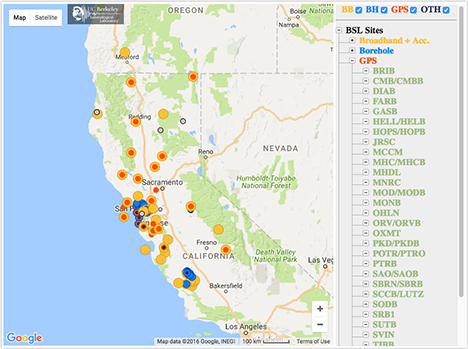Location
Site is located at the UC Berkeley Seismic Replacement Building in Berkeley, CA.GPS Monument Description
Threaded rod braced and bolted on building roofGPS Station Daily Timeseries
- Time series processing at the BSL *
-
Last year Clean Clean & detrended Raw Raw & detrended Lifetime Clean Clean & detrended Raw Raw & detrended Text file (final results only) Clean Raw
-
*discontinued
GPS Station Pictures
Table of Seismic Instrumentation
| Receiver | Antenna | Radome | |
| GPS | Septentrio PolaRx5 | TopCon Choke-ring | NONE |
GPS data is available at the Northern California Earthquake Data Center (NCEDC).
GPS Data
| Data Type | From | To |
|---|---|---|
| Low-rate raw | 11/14/2006 | 7/28/2006 |
| Low-rate rinex | 11/14/2006 | present |
| High-rate raw | 7/28/2006 | present |
| High-rate rinex | 5/1/2010 | present |
GPS Data Quality
Completeness
Data completeness is defined both as "Completeness of observations" and "Cycle slips per observation". "Completeness of Obs." is the number of epochs in the final RINEX file normalized to the expected number. This percentage will go down if time is missing from the RINEX file. "Cycle slips per Obs." is the total number of detected cycle slip normalized to the total number of observations in the RINEX file. This number will increase as the receiver loses lock on satellites more frequently.
| Previous Year |
 |
| Lifetime |
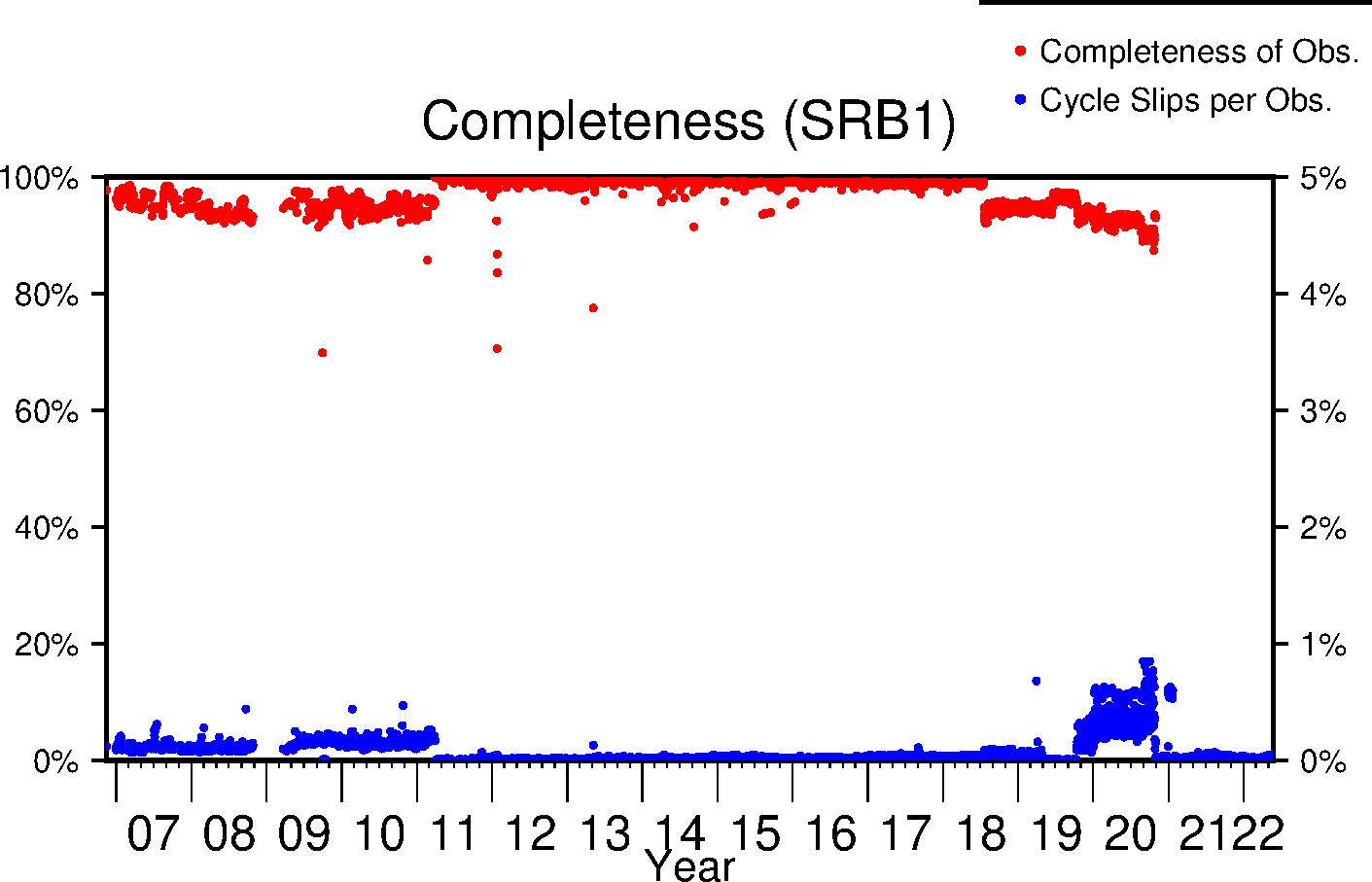 |
Multipath
The effects of multipath on the data are estimated by parameters for L1 and L2 (MP1 and MP2 respectively); see Estey and Meertens (GPS Solutions, 1999) for derivation. The daily value is the RMS of MP1 and MP2 throughout the day and for all satellites. Higher values indicate a greater prevalence and/or strength of multipathing, i.e. objects on the ground are providing multiple reflection pathways from the satellite to antenna.
| Previous Year |
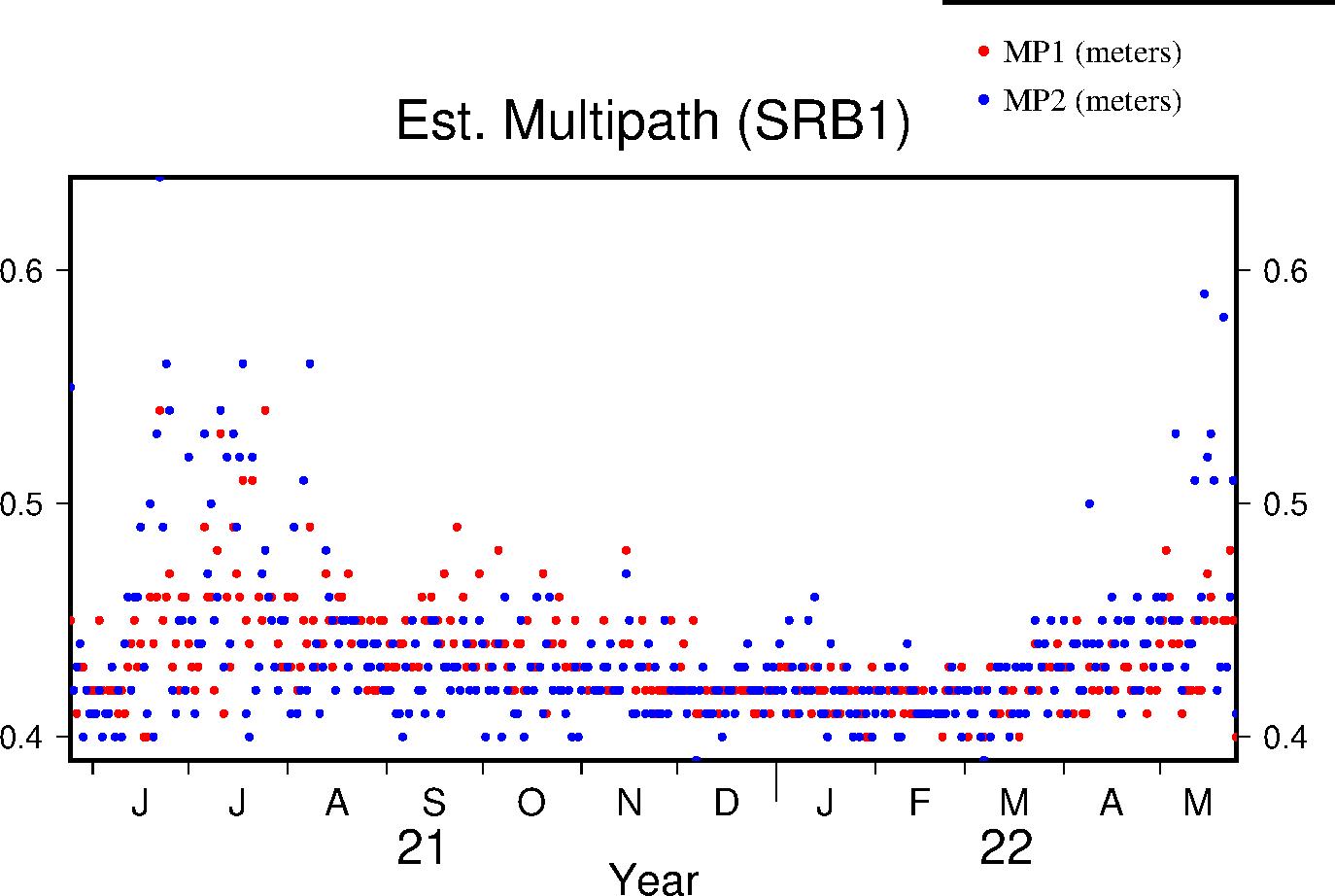 |
| Lifetime |
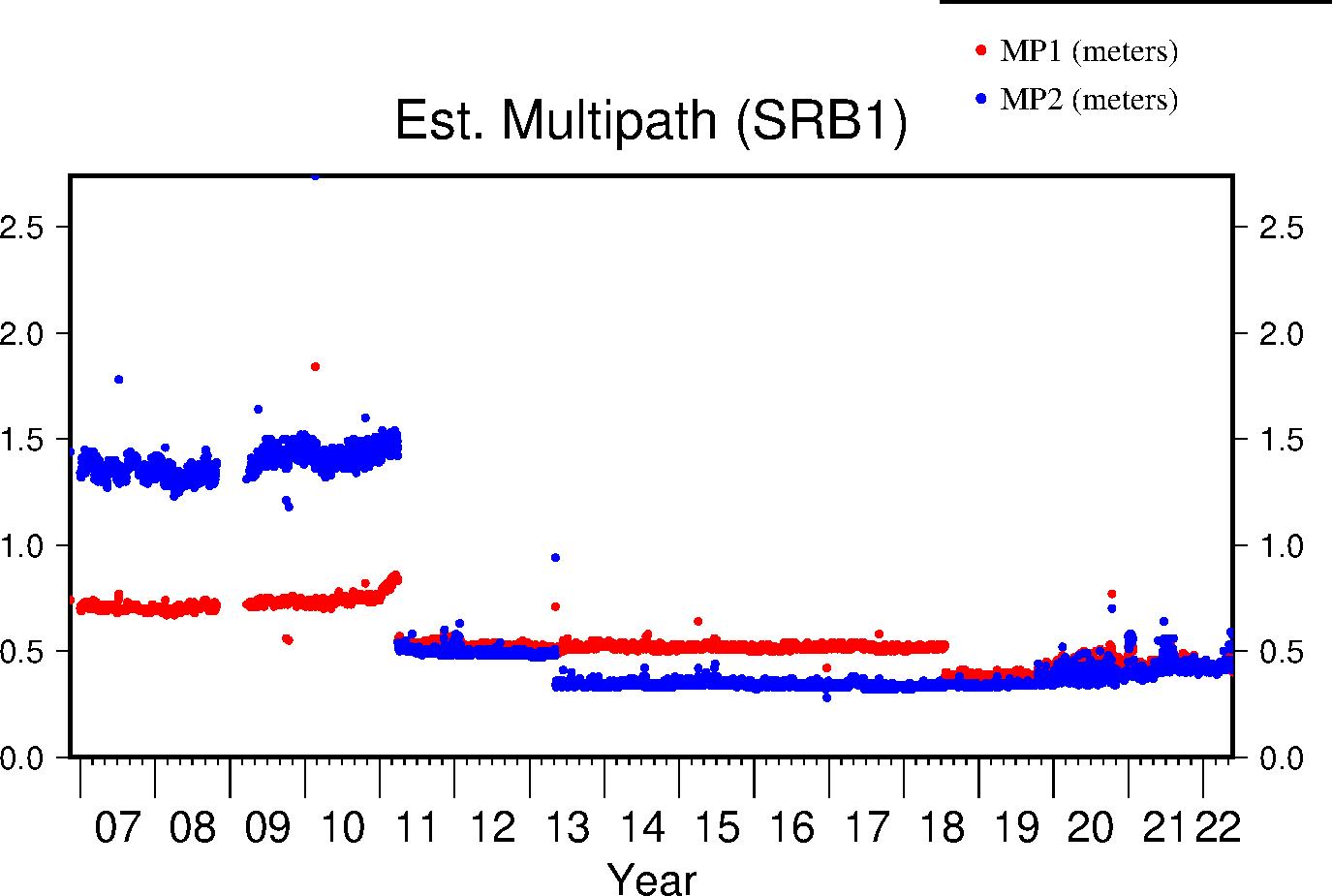 |
Signal-to-Noise Ratio
The Signal-to-Noise ratios are the mean values above the QC elevation mask for L1 and L2 respectively.
| Previous Year |
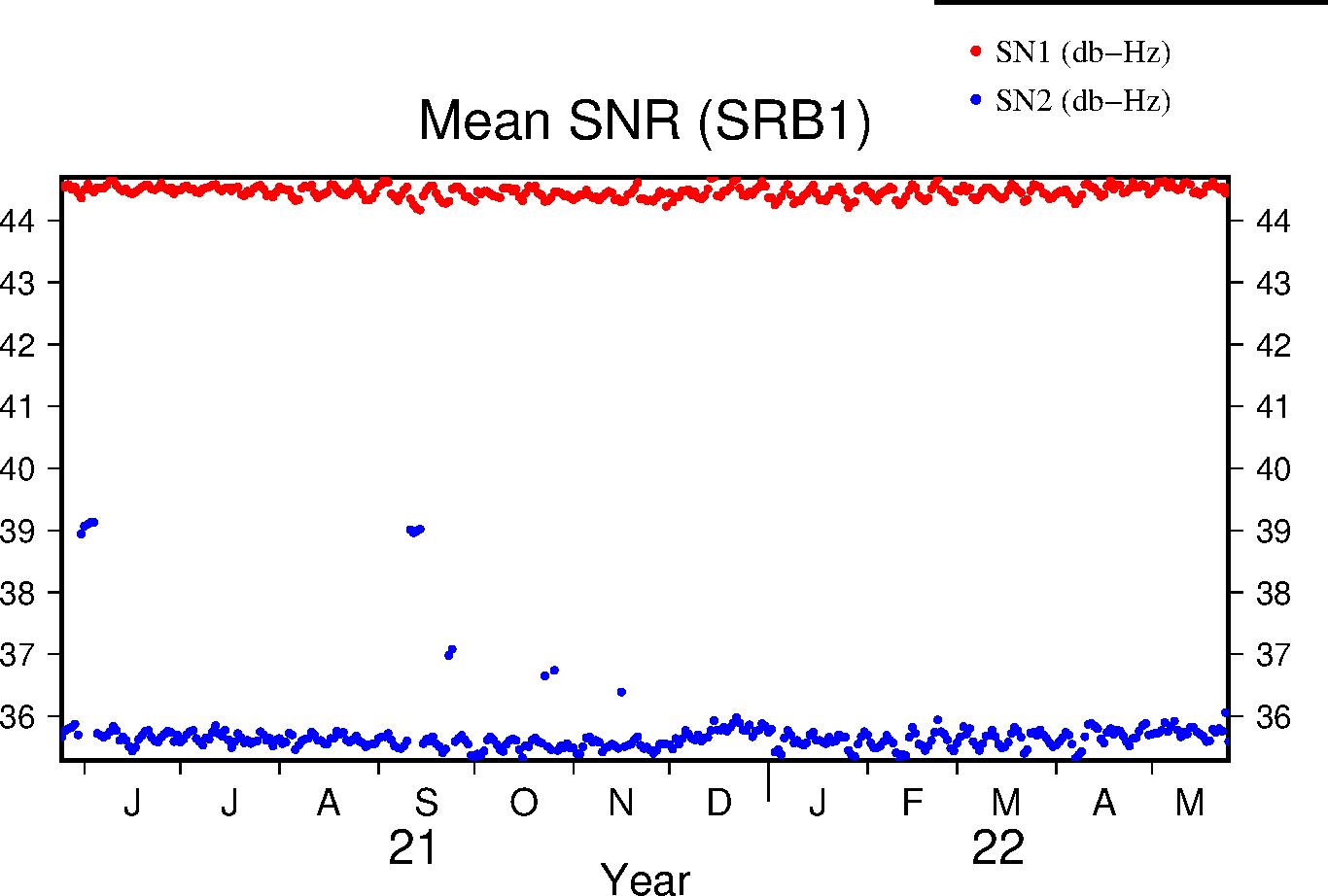 |
| Lifetime |
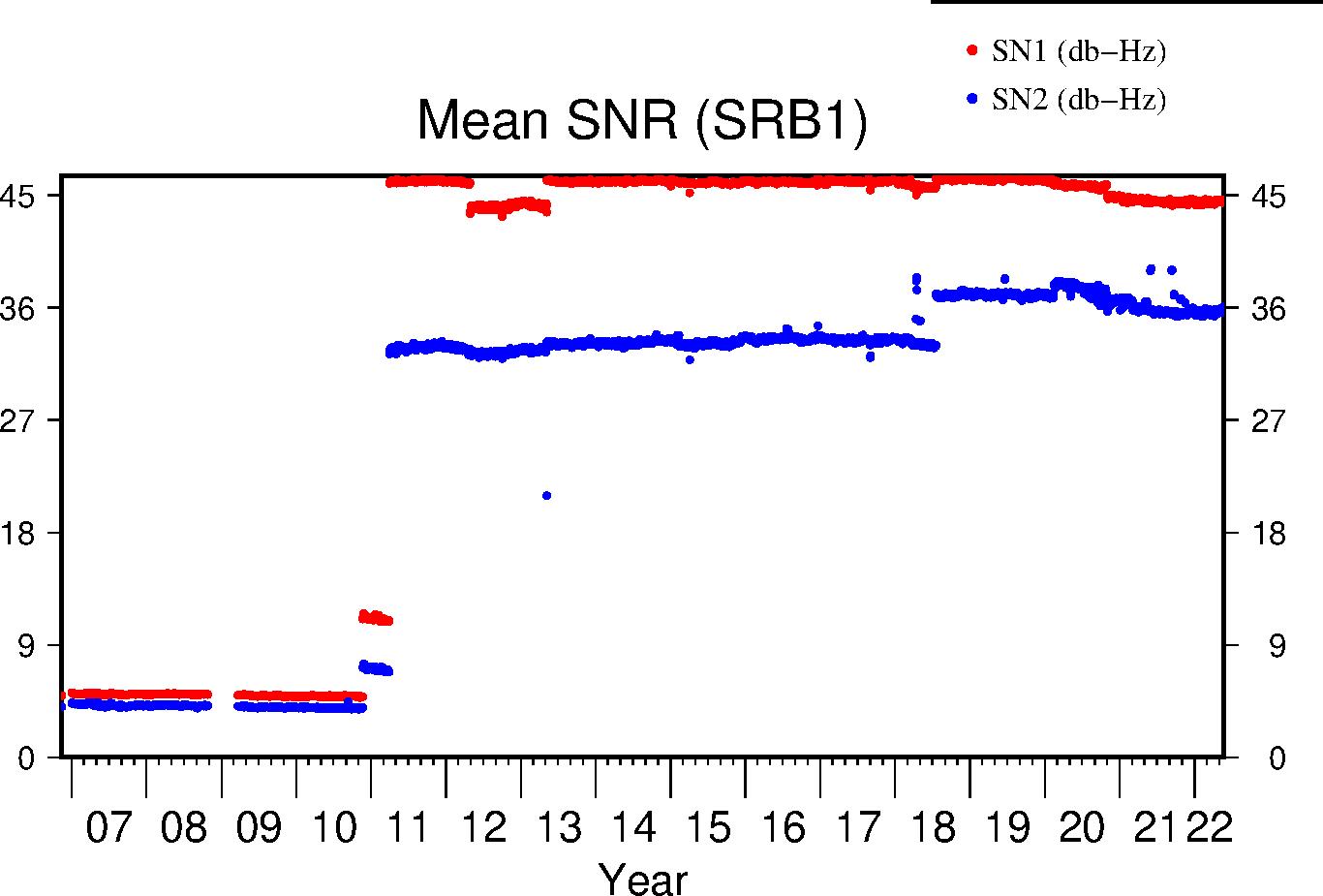 |
